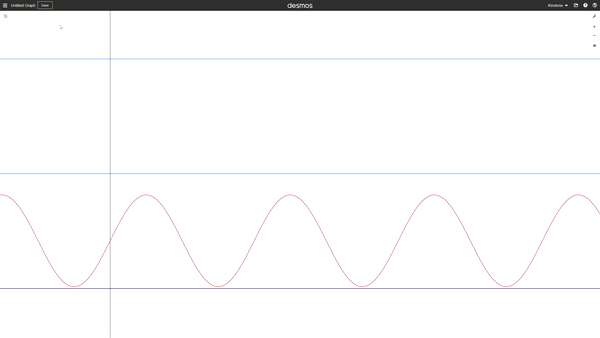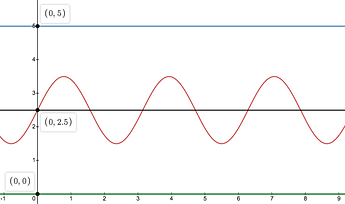@Exuviae inspired me to test out the CV functionality. Also, hi @Exuviae I bought a Strega from you, I think.
I’m in buffered bypass mode and running into some unexpected (to me, at least) functionality. I’m not sure if this is a CV thing or a buffered bypass thing, but I had Maths sending offset LFO CV into the LPF, which was fun. Tape noise was at least 75% CW so I was getting that nice hiss coming through when the LPF was CW, and then it would be filtered out by the LPF when the LFO fell. Cool cool cool, very fun.
However, when I hit bypass, I noticed that while my incoming audio signal was no longer being modified by Ribbons, I was still getting that LFO filter sweep with the tape noise. It was surprisingly noticeable. I guess that makes sense in the case of the tape noise because the pedal is actually generating sound itself as opposing to just modifying the incoming signal. I was also a bit surprised that the CV continued to control the mapped parameter when the pedal was bypassed.
Can you confirm that CV should continue to control parameters when the pedal is bypassed? And then I don’t know if you would want to disable tape noise when the pedal is bypassed – it’s kind of cool to have that hiss when the pedal is “off” but it probably goes against the concept of “bypass”? Or maybe when you’re in Bypass mode, Mix is automatically turned CCW?
Also, is it correct that the position of the knob for the mapped parameter is irrelevant? I was wondering if I could use that as an offset for my CV input, but it doesn’t seem to be the case. Could be nice?
2 Likes
Yes, in buffered-bypass mode the sounds generated by the pedal still come through. It just doesn’t process new incoming audio:
- Reverb tails
- Noise
- Magnetic dance (if it was latched)
- Loops (actually Ribbons doesn’t do this yet but it’s on the list of to-do’s)
- Sine-Wave Synth
No it is relevant. Ribbons only has a CV input range of 0-5V. If using Eurorack, I recommend adding a 2.5V offset to whatever you’re sending the pedal. You can think of the 2.5V offset as the “virtual zero” point. When CV in = 2.5V, the physical knob on Ribbons will track the parameter normally, as if it wasn’t modulated by CV at all.
Now, with the offset added, you have the ability to modulate Ribbon’s parameters in the positive or negative directions. The physical knob sets the zero point (2.5V) and if you put an LFO on top of the offset (2.5V + offset), it will be as if you are wiggling the knob back and forth. If you look at the diagram below, you can see a visual example of a sine-wave with a 2.5V offset added.
I should probably add this description to the manual (e.g. “How to use Ribbons with Eurorack”). I admit the CV / Exp descriptions in the manual are a little vague and catered toward guitarists using an expression pedal.
So, say I set a 2.5V offset coming out of Maths and have a LFO mapped to the LPF. If I turn the LPF knob all the way CCW, am I getting a sine wave that goes up from 0V to 1.25V and then down to -1.25 (which is really just 0V still)? If I have the knob fully CW, is the wave starting at 5V, going town to 3.75 and then up to 6.25V (which actually maxes out at 5V)?
Still not sure on the noise/CV functioning during buffered bypass – I understand how buffered bypass works now, but it feels weird that it’s still generating audio. I suppose that this can be considered a feature, not a bug (not joking), but it would be nice to have some control over it. Maybe a 2nd buffered bypass option that effectively turns the Mix knob CCW based on the Reverb amount or something.
My tests with using CV on Ribbons has been solid and I love that CV can be attenuated before it hits the target - unlike Expression voltage. Why is there no such thing as a stand-alone EXP attenuator?! Is it because of the TRS cable?
I will also try the offset suggestion as it looks like it would open the modulation possibilities up even further!
With expression pedals, the pedal sends out +5V, then the expression pedal attenuates it to be somewhere between 0 and +5V (2.5V is the center position of the expression pedal), and then finally sends it back to the pedal. So it kind of already works as an attenuator.
More or less. If you’re inputting a 2.5V offset CV + an LFO on top of it… and the CV is mapped to the LPF… as you twist the LPF knob back and forth, you’re basically doing this to the CV:

As you get closer to fully CW or CCW, the input signal is just clipped.
Maybe just a third bypass option called “Buffered Bypass” and the current implementation could be referred to as “Buffered Bypass With Trails”. Trails meaning, the pedal can still act as a sound source after being bypassed.
1 Like

